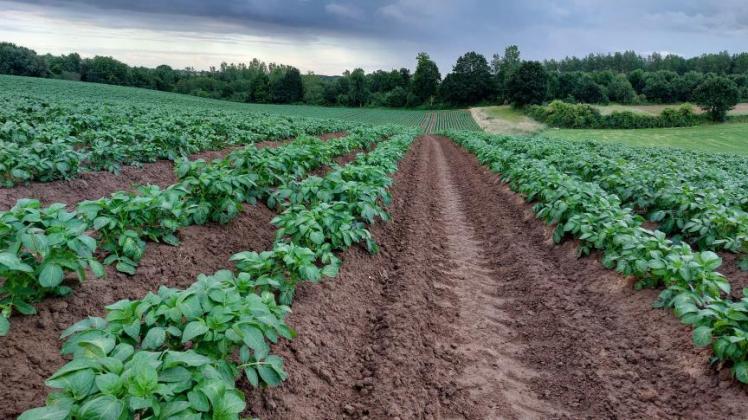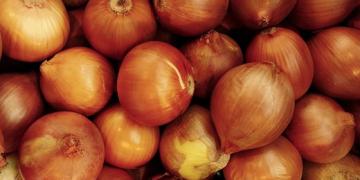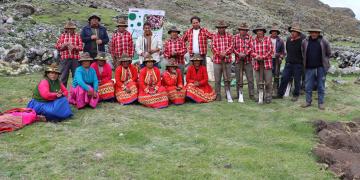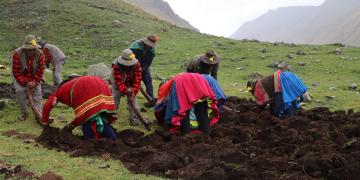Interpom: New technologies can make potato cultivation more sustainable
Sustainability starts with good cultivation techniques and optimal soil management. New technologies offer many possibilities.

In a keynote at the recent potato fair Interpom, Geert Haesaert called the doubling of global food production by 2050 to feed the growing world population the major challenge for agriculture. “For this, we need to rely more on knowledge and innovations, in an environmentally friendly and socially acceptable way. This can be done by better distributing food, by limiting food losses and/or by eating differently in the West,” Haesaert stated. “The ’climate disruption’ leads to more harvest failures and (a)biotic stress. More people means more urbanization, industry and infrastructure, and less agricultural land.”
Sustainable intensification
Haesaert advocated cultivating good agricultural land intensively but in a more sustainable way. That means using innovations to produce more, but with less environmental impact. “Not 1 but the whole of technologies and techniques will save the world. Embrace them, but don’t forget the good cultivation techniques: look at your soil, at agro-ecological aspects and at the development of new biostimulants and crop protection products.”
Better nitrogen utilization
The professor emeritus focused in his lecture on the carbon footprint of potato cultivation. “The CO2 emissions of potatoes are 6 to 7% higher than those of other crops such as grains (2 to 3%). We can reduce these by better nitrogen utilization and crop protection.”
Nitrogen (N) is important for potatoes because there is a clear positive correlation between nitrogen availability, yield and sorting. “Due to the superficial root system of potatoes, there is a high risk of nutrient leaching. A solution for this is to choose green ammonia nitrate as fertilizer, but for the time being that is too expensive for most arable crops.”
Improving N utilization through plant breeding and biotechnology remains a very difficult story. “This has to do with the superficial root system of the potato, which results in poor soil penetration. In the research, we only see progress with the metabolism in the plant: as soon as the nitrogen is in the plant, we do see differences between genotypes. There is also a strong interaction between the genotype and the environment with regard to N utilization, which makes classical breeding more difficult. In the last 10 years, large companies have invested heavily in molecular markers. This gives us more and more insight into which genes are important for N uptake, in the metabolism and processing of nitrogen.”
Potatoes come from South and Central America, where the day length is 12 hours. “That is why we had to find day-neutral types to get tubers. The gene responsible for day-neutrality (the Earliness locus ) is negatively linked to N utilization. We should actually be able to switch off that gene via biotechnology or find a variant of it.”
Another step further is predicting what the outcome will be. “Observing plants with drones and sensors gives an enormous output. With genetic data you can create models and combine genetic backgrounds, which allows you to optimize N utilization. But we are not there yet with potatoes. Big data , AI (artificial intelligence) and machine learning are becoming increasingly important.”
New genetic techniques
What about new genetic techniques? “It is important to know the target genes well, so that you can change them if necessary. For example, some potato varieties can be modified. However, each gene occurs 4 times in the potato, which complicates matters. On a laboratory scale, people have already been successful in developing a prototype in which the root branches more, which can improve N utilization. However, due to legal restrictions, it will take a few years before this can be applied in practice. Hybrid breeding can simplify breeding and ensure that the objectives are achieved more quickly. For the time being, no hybrid potato variety is being grown in practice worldwide, but its introduction could mean a whole revolution.”
Precision farming
Improving N efficiency can also be achieved by using soil and crop sensors, drone and satellite images… “With soil sensors, you can detect various fertility zones in your plot. With the most advanced soil sensors, you can also estimate certain nutrients (potassium, phosphorus, magnesium, etc.) quite well. Based on this, you can distinguish zones in your plot and then treat them differently for nitrogen fertilization. You can also add various layers of information to this, such as yield figures and information from satellite images. The next step is to use GPS coordinates to demarcate zones and start fertilizing variable. Depending on the plot, it is best to apply more nitrogen to the most fertile zones of your plot. Measuring mineral nitrogen with soil sensors remains difficult. With crop sensors, you can calculate crop indices, with which you can evaluate the crop condition. With this technology, you are quite capable of controlling a kind of additional fertilization system. It is more difficult to determine exactly how much additional fertilization you need based on the reflection pattern. “There is still a lot of translation work needed to get good models out of this and to convert them into adequate advice.”
Coated fertilizers and biostimulants
Using coated fertilizers is also an option. “They are quite expensive, but offer many possibilities because the nutrients are released slowly (from 6 weeks to 18 months), parallel to the crop needs. The search is now on for coatings that are 100% biodegradable, so that none of it remains in the soil. Biostimulants, which activate the root system and ’absorption ports’ of the plant, have a proven but not guaranteed effect,” says Haesaert.
Reducing denitrification – the process by which nitrate in the soil is converted into gaseous nitrogen by bacteria – is difficult, because it is a natural process that is difficult to control. “But with good soil structure, organic matter that ensures stable soil aggregates and preventing leaching, you can reduce denitrification.”
Better crop protection
Better crop protection can also reduce the carbon footprint of potatoes. “We have been investigating the approach to alternaria for years with sensors and drone images. However, determining an exact treatment time remains difficult. Phytophthora is another problem. If you can see that with a digital camera, you will also notice it with the naked eye and you are hopelessly too late. If you place a plant under stress, it emits signals – chemical substances or volatiles. These are captured by other plants and then it depends on the genotype of those other plants what happens to them.” Haesaert and his team treated and tested the Bintje variety with various isolates of phytophthora and achieved excellent results, creating real resistance.
“With new technologies we can better isolate, quantify and characterize resistance genes – also from wild related species. When we start crossing, we can detect markers, which gives us the possibility to stack multiple resistance genes.”
In gene editing, literature often talks about S-genes ( succeptable genes ). “Phytophthora and many other fungi need a protein structure in the cell membrane to get into the cell. With gene editing, you can switch off the S-genes quite easily, by creating a kind of guide sequence, complementary to what is in the gene. We attach the CAS enzyme to that. As soon as that is in the cell, it goes to the nucleus and looks for the desired sequence. The scissors (the CAS enzyme) cut it in two, so that the gene is no longer active. You have to ask yourself what the effect of switching off the S-gene is on the growth of the potato plant.”
Agro-ecological applications
Sustainability also embraces agro-ecological applications, which are very often in the rotation. “There is nothing wrong with a flower border that ensures that you have fewer aphids in the first 20 m of your crop. Don’t forget the existing achievements, such as the Viaverda warning system at plot level. That is an excellent instrument,” Haesaert concluded.
Fuente: landbouwleven.be




